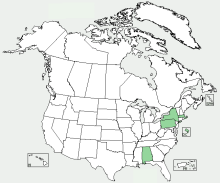European Chestnut
Botanical name: Castanea sativa
Family: Beech (Fagaceae)
Collectability: plentiful, good, specialised habitat
Main benefit
 source of carbohydrates and protein
source of carbohydrates and protein
Use - overview









Features and Identification
Habitat
Type: woods
Distribution: mainly SE England, continental Europe
General
Growth type: tree
Cycle: deciduous
Height: up to 30 meters
 Leaf
Leaf
Shape: lanceolate
Texture: smooth
Arrangement: alternate
Edge: toothed
Other: up to 18cm
 Trunk
Trunk
Colour: grey-brown
Texture: smooth when young, turning more rugged when mature
 Flower
Flower
Shape: catkin
When: July
Colour:
 Seed
Seed
Shape: roundish
Colour: dark brown
Size: 3cm
Casing: spiky husk
Other: 2-3 in case
Type: woods
Distribution: mainly SE England, continental Europe
General
Growth type: tree
Cycle: deciduous
Height: up to 30 meters
 Leaf
LeafShape: lanceolate
Texture: smooth
Arrangement: alternate
Edge: toothed
Other: up to 18cm
 Trunk
TrunkColour: grey-brown
Texture: smooth when young, turning more rugged when mature
 Flower
FlowerShape: catkin
When: July
Colour:

 Seed
SeedShape: roundish
Colour: dark brown
Size: 3cm
Casing: spiky husk
Other: 2-3 in case
Distribution Map

When Available?
 July and August
July and August all year
all year October and November
October and NovemberParts with black and white icons are for non-culinary use
Culinary Use
Flavour
Rating and Description:

 cooked: sweet and mealy; raw: astringent
cooked: sweet and mealy; raw: astringent
How to Consume
 raw, roasted, cooked, flour
raw, roasted, cooked, flour
Special preparation
 peel inner casing to cook, pierce inner casing before roasting
peel inner casing to cook, pierce inner casing before roasting
Nutrition
 starch, but does not contain oil
starch, but does not contain oil
Used as ...
 food, beverage (coffee substitute)
food, beverage (coffee substitute)
Rating and Description:

 cooked: sweet and mealy; raw: astringent
cooked: sweet and mealy; raw: astringentHow to Consume
 raw, roasted, cooked, flour
raw, roasted, cooked, flourSpecial preparation
 peel inner casing to cook, pierce inner casing before roasting
peel inner casing to cook, pierce inner casing before roastingNutrition
 starch, but does not contain oil
starch, but does not contain oilUsed as ...
 food, beverage (coffee substitute)
food, beverage (coffee substitute)
Medicinal Use
Action:

 (bark): anti-inflammatory, astringent, expectorant, tonic
(bark): anti-inflammatory, astringent, expectorant, tonic
May treat:

 bleeding, diarrhoea, convulsive coughs (gargle)
bleeding, diarrhoea, convulsive coughs (gargle)
 rheumatism, back pain, stiff muscles/joints
rheumatism, back pain, stiff muscles/joints

 (bark): anti-inflammatory, astringent, expectorant, tonic
(bark): anti-inflammatory, astringent, expectorant, tonic May treat:

 bleeding, diarrhoea, convulsive coughs (gargle)
bleeding, diarrhoea, convulsive coughs (gargle) rheumatism, back pain, stiff muscles/joints
rheumatism, back pain, stiff muscles/joints
Other Use

 (bark, wood)
(bark, wood)  (husk): tanning, shampoo
(husk): tanning, shampoo  (trunk) timber - hard, strong, light, durable
(trunk) timber - hard, strong, light, durable
Collection, Storing and Notes
Collection
 throw stick into branches - ripe ones will fall
throw stick into branches - ripe ones will fall
Drying

 (bark): dry to store
(bark): dry to store
 dry in warm, ventilated room for about 2 months
dry in warm, ventilated room for about 2 months
 throw stick into branches - ripe ones will fall
throw stick into branches - ripe ones will fallDrying

 (bark): dry to store
(bark): dry to store dry in warm, ventilated room for about 2 months
dry in warm, ventilated room for about 2 months
Key
Plant parts:
 leaf
leaf
 stem or trunk
stem or trunk
 sap
sap
 root, bulb, tuber and other below ground parts
root, bulb, tuber and other below ground parts
 flower
flower
 fruit
fruit
 seed
seed
Parts with black and white icons in the availability section are for non-culinary use
Use:
 culinary use
culinary use
 medicinal use
medicinal use
 household use
household use
Other:
 caution
caution
 leaf
leaf stem or trunk
stem or trunk sap
sap root, bulb, tuber and other below ground parts
root, bulb, tuber and other below ground parts flower
flower fruit
fruit seed
seedParts with black and white icons in the availability section are for non-culinary use
Use:
 culinary use
culinary use medicinal use
medicinal use household use
household useOther:
 caution
caution
Glossary
General Glossary
Glossary of Medicinal Terms and Nutritive Substances
- lanceolate: shaped like a lance head; long, tapering to end
Glossary of Medicinal Terms and Nutritive Substances
- anti-inflammatory: reduces inflammation of joints, injuries etc. (see also demulcent, emollient)
- astringent: causes localised contraction of blood vessels and tissue, reducing the flow of blood, mucus, diarrhoea etc.
- expectorant: removes excess amount of mucus from respiratory system (see also decongestant)
- tonic: improves general health, bringing steady improvement




